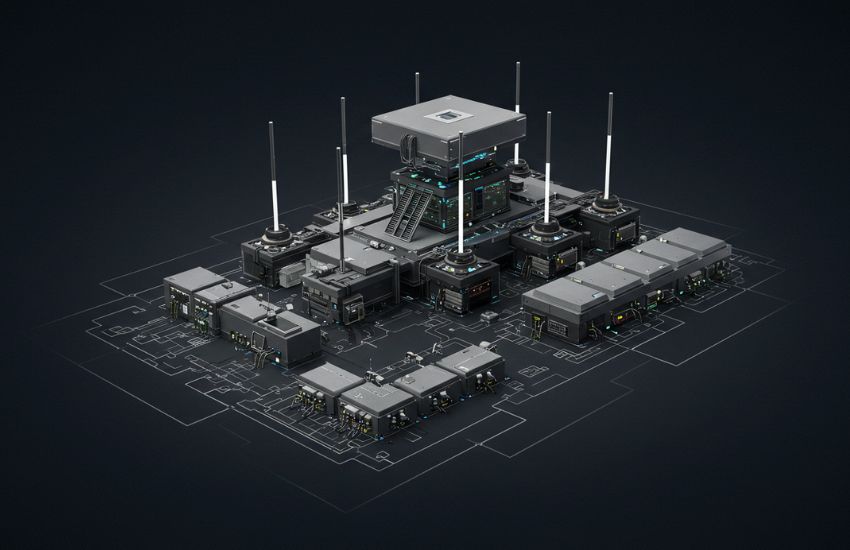Microsoft continues to redefine the frontier of Microsoft AI acceleration with the unveiling of the Microsoft Introduces Trellis framework, a breakthrough in accelerating complex machine learning and 3D asset generation workflows. Designed as an end-to-end solution for researchers and developers, Microsoft Trellis AI addresses long-standing performance and flexibility challenges by leveraging a structured latent representation across multiple data modalities.
Unlike traditional pipeline architectures that isolate 2D and 3D data processing, Trellis for machine learning unifies mesh, Radiance Fields, and point cloud representations within a single training paradigm. This amalgamation enables seamless transitions between formats, facilitating more efficient pretraining and finetuning of high-capacity models for real-world applications.
Architectural Overview
At the core of Microsoft Trellis AI lies a Structured Latent (SLAT) framework that integrates sparse 3D grids with dense multiview visual embeddings. SLAT abstracts various 3D data formats, meshes, Gaussian splats, and volumetric fields into a uniform latent tensor, allowing a single decoder network to output any desired format.
This unified decoder is powered by rectified flow transformers, which sequentially refine latent representations by learning context-aware diffusion steps tailored for 3D structure reconstruction. The transformer backbone scales to over 2 billion parameters for the largest Trellis variants, enabling high-fidelity asset generation that consistently surpasses prior state-of-the-art methods in both realism and multiview consistency.
Training of Trellis for machine learning leverages a massive dataset of over 500,000 high-resolution 3D assets drawn from diverse domains, including industrial CAD models, organic shapes, and scanned environments. The training pipeline employs mixed-precision arithmetic and layer-wise adaptive moment estimation to optimize convergence speed without sacrificing generative quality.
Additionally, a customized scheduler dynamically adjusts the denoising rate within rectified flow steps, improving multi-object handling and reducing generative artifacts in complex scenes.
Integration with Azure Machine Learning
To facilitate seamless deployment, Microsoft introduces Trellis as an integrated offering within Azure Machine Learning (AML), capitalizing on Azure’s scalable GPU clusters and TensorRT optimizations. Users can instantiate pre-built Trellis environments via AML’s drag-and-drop pipelines or CLI, streamlining both experimentation and production phases.
The integration includes containerized inference endpoints that auto-scale based on query load, ensuring cost-effective utilization of Azure GPU instances such as NVIDIA A100 and H100 accelerators.
Furthermore, Trellis endpoints support real-time streaming of generative outputs to Azure Digital Twins and IoT hubs, enabling interactive 3D content creation in mixed-reality applications. These capabilities align with Microsoft’s AI at Scale vision, which aims to democratize access to supercomputing infrastructure for diverse enterprises.
Performance and AI Acceleration
Benchmarking against leading open-source and proprietary 3D generation frameworks demonstrates that Microsoft AI acceleration through Trellis achieves up to a 3× throughput improvement in training and a 4× reduction in inference latency for high-resolution mesh outputs. This performance leap is attributed to optimized kernel fusion in the rectified flow transformer layers and tailored memory layouts for sparse grid operations.
Moreover, quantization-aware training allows deployment of lighter Trellis variants on edge GPUs without notable degradation in asset fidelity, broadening the model’s applicability to on-device scenarios.
The Microsoft Trellis AI suite also integrates mixed-workload scheduling across CPU and GPU resources, employing asynchronous data pipelines to overlap preprocessing, data augmentation, and forward/backward passes, thus maximizing hardware utilization.
This unified scheduling approach delivers a consistent acceleration of traditional computer vision tasks, such as object detection and segmentation, when repurposed via Trellis’s structured latent outputs.
Use Cases and Implications
By harnessing Trellis for machine learning, industries spanning gaming, architecture, and simulation can generate bespoke 3D assets at unprecedented speed and quality. Game developers benefit from automated level-of-detail mesh generation directly from concept art, reducing manual rigging and texturing efforts.
In architecture and engineering, virtual twins of complex structures can be synthesized from blueprints and site photographs, enabling rapid prototyping and stakeholder review within immersive walkthroughs. The tool’s capacity for multiformat export also empowers deep-learning researchers to embed 3D-aware features into downstream tasks like volumetric segmentation and scene understanding.
The broader implication of Microsoft AI acceleration via Trellis lies in lowering the barrier to entry for advanced 3D generative research, fostering innovation across academia and industry. By offering both open-source variants on GitHub and managed cloud services, Microsoft ensures that the global developer community can contribute to and benefit from ongoing enhancements to the SLAT paradigm.
Conclusion
With the launch of Microsoft Introduces Trellis, Microsoft cements its leadership in AI-driven model acceleration and 3D content generation by delivering a scalable, high-performance framework that unifies data modalities under a single latent architecture. The integration of Trellis into Azure Machine Learning not only amplifies training and inference throughput but also democratizes access to cutting-edge AI acceleration technologies.
As businesses and researchers adopt Microsoft Trellis AI and Trellis for machine learning, we anticipate a surge in creative and scientific applications that leverage accelerated generative workflows to solve real-world challenges more efficiently than ever before.
